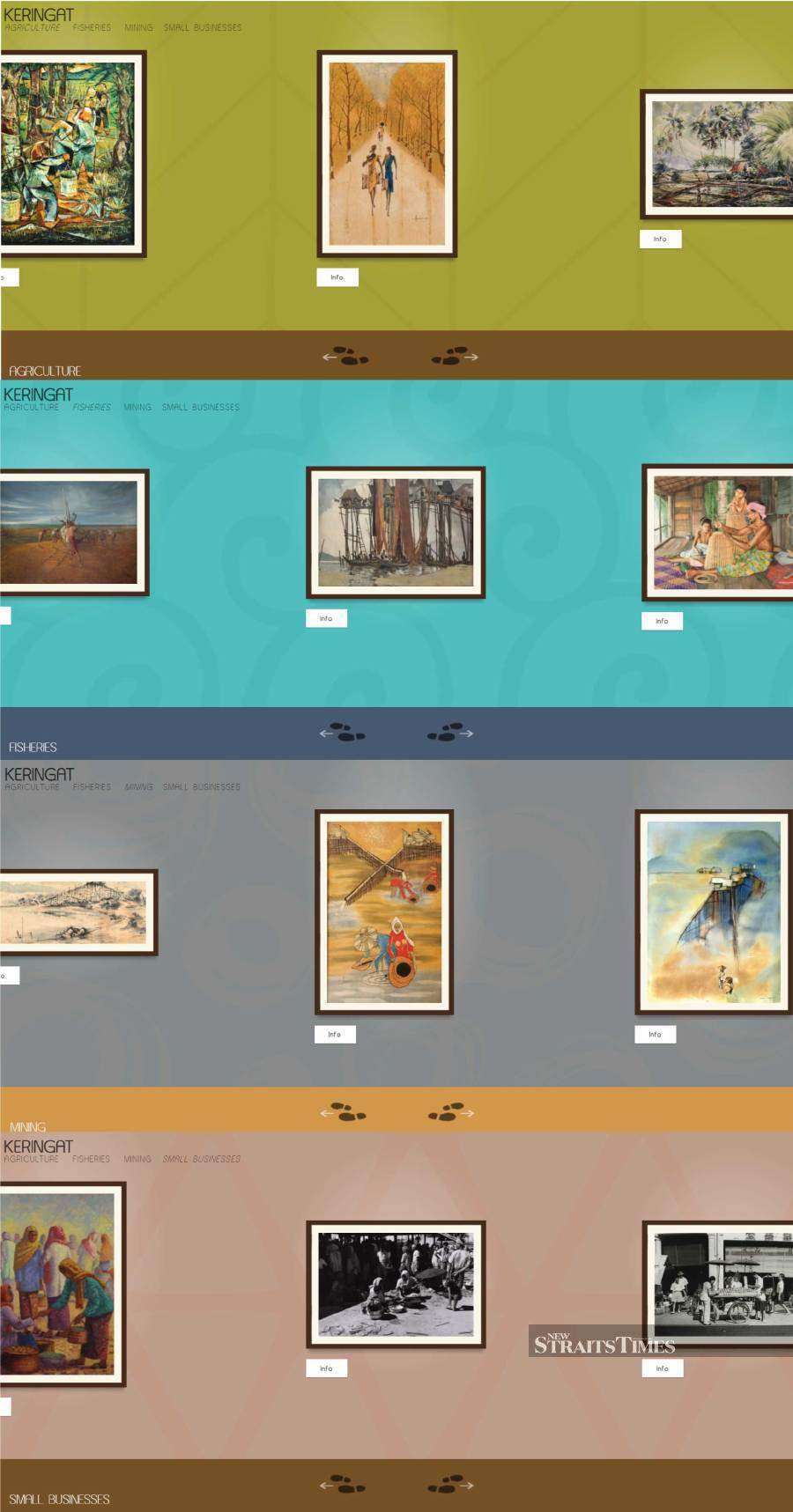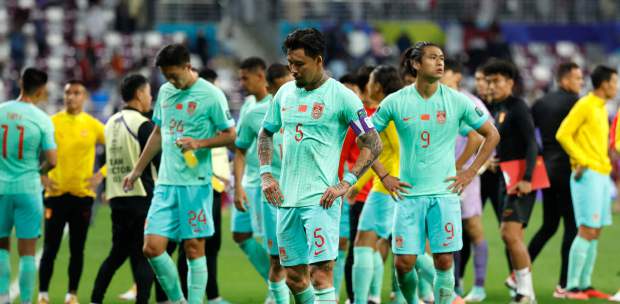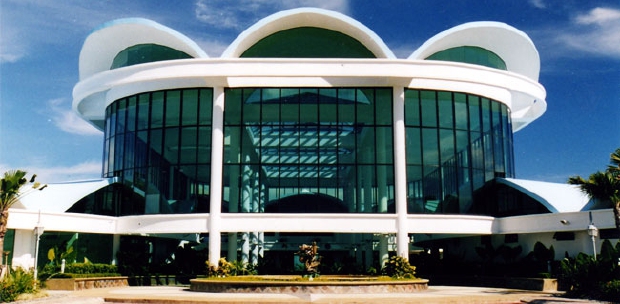Hanna Hussein takes a virtual tour of the Bank Negara Malaysia Museum and Art Gallery as it moves towards a hybrid set-up with three new exhibitions
THE clinking and clanking of metals fill my living room as my laptop takes me to the depths of the "Works on Metal" exhibition.
On the screen of my lappy is a series of slides and their description, with background photos of the coin-making process — from molten metal to a cauldron full of shiny pieces.
On each slide, visitors are able to click on links that will take them to another slide with more information. It's easy and the site is really user-friendly.
This is one of three new exhibitions launched by Bank Negara Malaysia Museum and Art Gallery (BNM MAG) in its virtual platform www.museum.bnm.gov.my.
The initiative is a way of showcasing museum education as the world moves on in the shadow of the pandemic.
Due to Covid-19, all physical exhibitions and in-person educational initiatives, such as school visits, guided tours and outreach programmes by the museum in Jalan Dato' Onn, Kuala Lumpur, have been put on hold.
BNM MAG is among the earliest museums in the country to digitalise exhibitions and educational programmes.
Since access is free anytime, anywhere without an appointment, I just have to check it out.
On my first tour, I journey through the story behind the manufacturing of coins, as the virtual museum takes me on a deep dive into the rich history of the metal pieces in our pockets and wallets, which often go unnoticed.

INTRICATE ART
Well, everyone is familiar with the Malaysian ringgit and sen issued by Bank Negara.
But do you know that the coin has existed as a medium of exchange for more than 2,000 years?
Yes, it was invented as an early form of currency to facilitate barter trading in ancient times, as it is easier and lighter to carry around.
One click takes me to another slide, viewing what is believed to be the first coin issued by the city of Lydia, a colony of the Greek empire in Asia Minor back in the seventh century BCE.
Known as the Lydian Stater, which is derived from the Greek word "weighing scale", the coins are made of electrum, which is an alloy of gold and silver.
These ancient coins were actually made by hand and the designs featured portraits of the city-state's patron gods, goddesses and even legendary heroes on one side, and an animal mascot on the other.
The Lydian Stater features two strong animals — the lion symbolising the Lydians' supreme god Baal, and the ox that represents Zeus, who is the supreme god of the Greeks.

The usage of coins in Lydia proved to be popular, later spreading beyond the region.
In the Malay peninsula, the Kedah sultanate is believed to be the first to issue silver coins as a currency in the 13th century CE, followed by Melaka, Pahang, Johor, Perak, Perlis, Terengganu, Selangor and Kelantan.
When metal started becoming an exchange medium, weights and measures of the coins were standardised so it became easier to assign and quantify the value of different goods.
The main characteristic of coins is durability, as they will not rust and corrode easily.
They are made not too heavy and not too hard. Their denominations are easily divided or multiplied, and their value may be higher than the traded materials
itself.
In modern days, alloys are used in making coins to ensure that the value of their metal is always lower than face value.
Malaysia's third Series Coins, which was circulated in early 2012, are made of nickel brass clad copper, nickel brass and stainless steel.
Next, I watch a short video on the coin-making process, an interesting insight on how modern coins are minted with machines.
Each machine is able to mint more than 600 coins per minute. This speed is crucial to meet the demand for billions of coins every year.
Before the minting process even begins, the coins have undergone a design process that involves sketching, sculpting and die making.
In Malaysia, new coins are designed every 15 to 20 years, incorporating new and improved security features.
In the sculpting process, the designs are translated into 3D models using clay. It takes about two to four weeks to produce one clay model.
Then, a laser scanner is used to convert the 3D model made by the sculptor into 3D digital format.
The engineer will then use the die-making machine to carve the designs onto the dies. It may take more than 24 hours to complete a set, depending on the complexity of the coin design.
The tool-maker will then ensure that each set of dies are cured and fit for purpose before they can be used for minting coins. Once the design stage is complete, the minting process can begin.
In the minting process, the metals are purified, melted and mixed with others to form an alloy, which is then cast into ingots.

These ingots are rolled into sheets with a standard thickness, which are then punched out as blank coins.
The blanks are cleaned using chemicals to remove oil and dirt, and passed through a sorting machine that ensures each blank has the correct shape and diameter.
The blanks are now called planchets, which will be fed into the minting machine and stamped to produce coins.
Finally, inspection operators will check the coins to ensure that they are free from defect.
The tour ends with an activity where I get to design my own coin.
Link: www.museum.bnm.gov.my/wom/

A MATTER OF PRIORITY
The next tour is called "Scarcity", a virtual exhibition that explores the impact of small changes in our daily routine towards better preserving our environment, and explains why climate change has been gaining attention even among central banks.
These are presented through various mediums like images, videos and interactive activities.
The first zone mostly explains what scarcity means and the science behind it. It shows simple videos on the connection between the planet's dwindling resources and climate change.
However, the "What Can I Do Today?" section is more of an interactive role-playing activity that shows where and how one can help care for the environment.
It is an ideal and simple educational tour for young visitors.
Just a click on the mouse, it will show how you can do your part even when you are at home.
The tour ends with examples of case studies of environmental issues around the world.
Link: http://museum.bnm.gov.my/scarcity/

TALES OF OUR FOREFATHERS
The third tour is called "Keringat", an art exhibition that illustrates the chronology of events that have shaped the country's socioeconomic development through a range of impressive artworks.
The exhibition, comprising 53 paintings and photographs, showcases the work of our forefathers from the colonial era in Malaya up until the 1980s.
There are four zones primarily featuring agriculture, fisheries, mining and small businesses.
Checking out the first zone, which is Agriculture, visitors can see the work
of Abdullah Ariff in Windy Day, which
depicts a flat and lush green area of padi fields.
As we all know, rice is a staple in Malaysia and one of the main agriculture activities besides rubber and oil palm cultivation.
Another artwork that is featured in the exhibition is Hu Te Hsin's Rubber Tapper, interestingly produced as batik in the 1960s, which visually captures the beautiful scene of a rubber plantation and Indian women dressed in sari.
Clicking the "Fisheries" zone, I enter an art gallery where 13 stunning artworks hang on the wall, hand-painted by several artists.
My favourites are Big Catch by Abdul Rahman Rahim and Nafkah by Hoessein Enas, both painted using oil paint.
In the Mining section, I can see another 12 paintings on the heyday of the mining era by several artists, as well as a few more artworks on small businesses.
The "Works on Metal", "Scarcity" and "Keringat" exhibitions are part of BNM MAG's permanent virtual showcase.
Link: http://museum.bnm.gov.my/forefathers/
Rediscover Malaysia with Hotels.com Coupon Code to enjoy exclusive rooms with a reasonable price.




